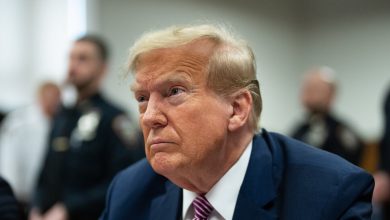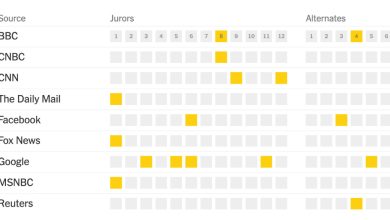How I Became an Asian American

In 1993, I was preparing to move to Ann Arbor, Mich., for graduate school when a friend, a Korean American, gave me a few words of advice:
“Vincent Chin, man.”
I’d never heard of Vincent Chin. But then I read about his killing about 10 years earlier near Detroit, not so far from Ann Arbor. He was fatally beaten with a baseball bat by an autoworker at a time when the American auto industry was on its knees and Japan’s was ascendant.
Mr. Chin was of Chinese descent, not Japanese. But no matter. His assailant, Ronald Ebens, allegedly sneered at him at a strip club where Mr. Chin, 27, was celebrating his impending marriage: “It’s because of you,” Mr. Ebens said, using a pejorative, “that we’re out of work.”
Mr. Ebens pleaded guilty to manslaughter in a deal with prosecutors in county court. His stepson, who had been laid off from his job as an autoworker, was with Ebens when the attack occurred. Ebens’s stepson held Mr. Chin when Mr. Ebens first struck him. The stepson pleaded no contest to the same charge. They were each fined roughly $3,000 and put on probation but received no jail time. Efforts to prosecute them on federal charges of violating Mr. Chin’s civil rights ultimately failed. Both men said they were not motivated by racial hatred. But reading about Mr. Chin’s killing changed my perspective about who I was. Like Vincent Chin, I was from a Chinese family. But I also began to think of myself as an Asian American.
I wasn’t alone.
“Before the Vincent Chin case, it’s fair to say there weren’t Asian Americans,” the legal scholar Frank Wu argued in a documentary film about the legacy of Mr. Chin’s murder, “Vincent Who?” — meaning that until the 1980s, we Asians did not see ourselves as having much in common with one another. But stereotypes like the “perpetual foreigner” exposed our shared vulnerability to discrimination and united us as a group whether we knew it or not. Asian American identity was grounded in race.
Today, race, rather than ethnicity or nationality, also appears to explain the spike in anti-Asian violence in the United States during the Covid-19 pandemic. Those assaulting Asian Americans in cities across the country do not seem to differentiate between Asian Americans and Asian nationals. But being Japanese in Detroit in 1982 was as pejorative for economic reasons — what the Japanese did in transforming their country into an industrial powerhouse — as for racial reasons. These tensions coincided with the rise of a neoliberal ideology evidenced by accelerating deindustrialization. With the United States facing a powerful Asian rival, it would lay the groundwork for today’s anti-Asian backlash.
In the late 1970s, Chrysler’s woes signaled the beginning of a comprehensive decline in domestic manufacturing. By 1980, Japan’s auto industry outpaced America’s for the first time. Chrysler avoided bankruptcy in 1979 only by securing $1.5 billion in federal loans. In 1985, President Ronald Reagan decided not to extend voluntary quotas on Japanese auto imports, citing the need for “free and fair trade.”
Today the Asian tiger in question is not Japan but China. In 2016, as a presidential candidate, Donald Trump vented, “We can’t continue to allow China to rape our country.” As president, Mr. Trump whipped up anti-Asian fervor by pointedly referring to Covid-19 as the “Chinese virus,” a term that predictably caught on as a slur to refer to Asian people in general.
China was to blame for the disruption of our accustomed way of life and the mounting death toll, the story went, not the Trump administration’s bungled and insufficient public health response whose goal was a quick return to business as usual. And by condemning China and waging an isolationist trade war, Trump gave cover to the rest of his economic agenda — deregulation and big corporate tax cuts.
Less bombastic in his exhortations, President Joe Biden nevertheless also evokes the specter of China to urge a retreat from the failed policies of past administrations.
In his 2022 State of the Union address, Mr. Biden pledged to “transform America and put us on a path to win the economic competition of the 21st century that we face with the rest of the world — particularly China,” as if China were particularly responsible for razing the fortunes of the working class. He called on Congress to pass the Bipartisan Innovation Act, which, among its provisions, would subsidize domestic semiconductor production.
“It’s no wonder the Chinese Communist Party is literally lobbying — paying lobbyists — against this bill passing,” Mr. Biden said last month, seeming to suggest that the ideology at fault for deindustrialization is not neoliberalism but communism.
To the extent that we regard anti-Asian violence as essentially a race problem, our search will tend to be for anti-racist solutions, like new hate crime legislation, that may not adequately account for the economic inequality behind the violence. In 2021, Mr. Biden signed the Covid-19 Hate Crimes Act, making the reporting of hate crimes easier and expediting the review process. Yet that same year, only seven of 233 anti-Asian attacks reported in New York City led to a guilty plea to a hate crime, according to a report released this year by the Asian American Bar Association of New York and dedicated to the memory of Mr. Chin
In 1982, Mr. Chin was made into a scapegoat not only for Japanese autoworkers and executives but also for a deteriorating way of life for those once solidly in the middle class but quickly falling out of it. Today, Asian Americans are not only the scapegoat for Xi Jinping or duplicitous Chinese C.E.O.s. We are also the scapegoat for a fading sense of well-being in a market-driven and hypercompetitive society. Anti-Asian violence will continue to be a fact of life so long as racist “yellow peril” messaging about China continues and is allowed to cover up the deep structural forces that have produced generational division and alienation in America. I hope Mr. Chin becomes an even more potent symbol of overdue justice not only for Asian Americans but for all Americans who know their worth is more than what racism and capitalism demand.
David Shih is a professor of English at the University of Wisconsin, Eau Claire, and the author of the forthcoming “Chinese Prodigal.”
The Times is committed to publishing a diversity of letters to the editor. We’d like to hear what you think about this or any of our articles. Here are some tips. And here’s our email: [email protected].
Follow The New York Times Opinion section on Facebook, Twitter (@NYTopinion) and Instagram.



